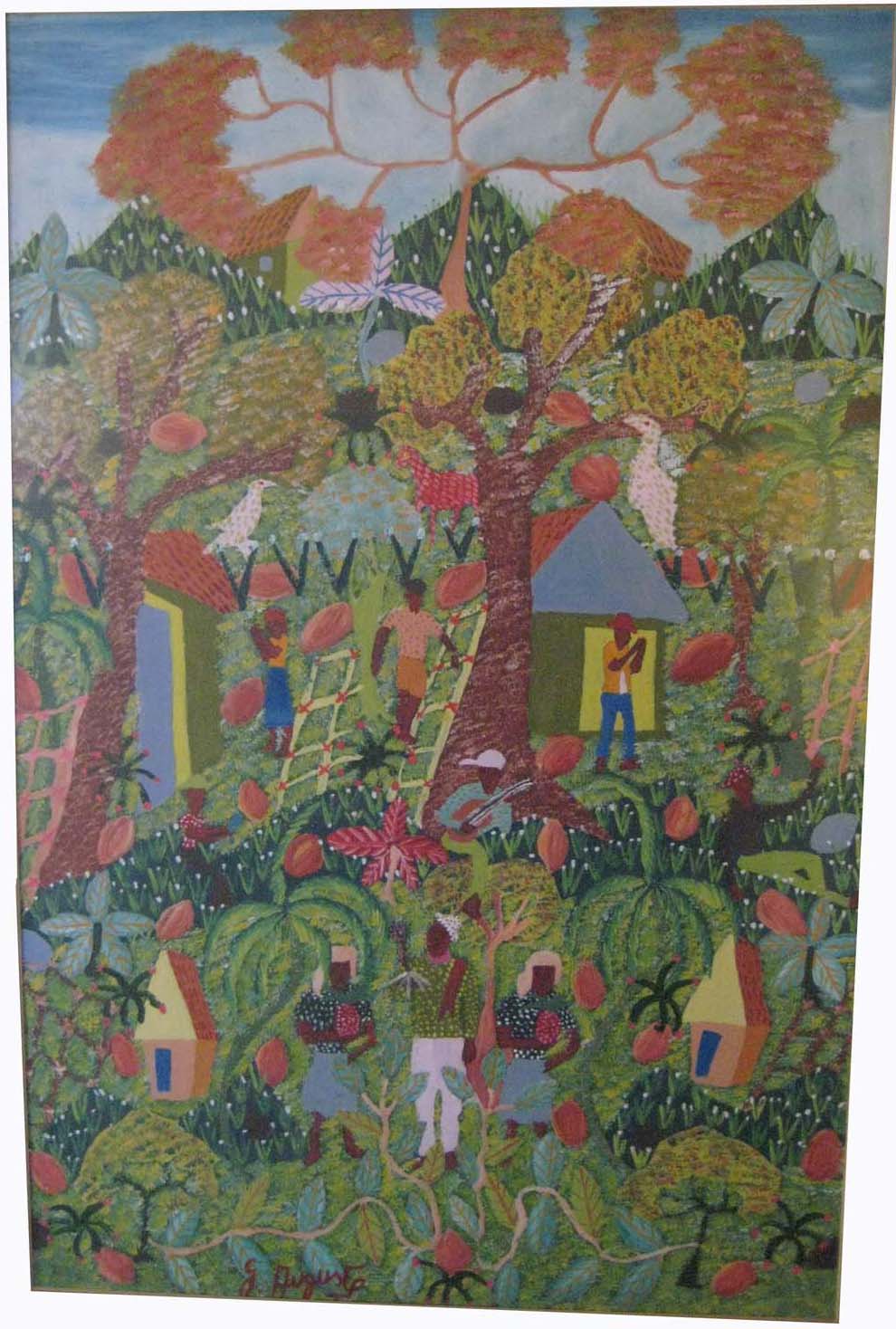Georges Auguste
(1933, Vialet, Petit-GoČve,Haiti - )

Title Unknown
Oilor Acrylic on board(?)
23.75 x 15.5 inches, visible painting
31 x 22 inches, copper metal frame
Glazed
Signed,
$1500.00
Fine condition with bright color.
Auguste is known for his vibrant, colorful scenes of rural Haitian life in a style known as "Raw Art."
Georges Auguste born in 1933, at Vialet, Petit-Goave, Haiti. Auguste received only three years of schooling in his native village. In 1940 his mother died in a fire in their home, and he was placed in an orphanage where he learned weaving. Later he became a night watchman at an agricultural school in Vialet.
During a trip to Port-au-Prince, he met Pierre Eugene, who secured him a position as night watchman at the Center d’Art. He began to paint, using material left over by the painters at the Center, becoming so enamored of painting that he began to neglect his work!
For ten years he studied with the painter Nehemy Jean, but in 1974 he altered his style and began painting scenes of Haitian life, the way he "sees it in dream".
In the rich and intricate patterns of George Auguste's painting, his background as a tapestry maker is evident. Indeed he weaves elements of daily life into paintings that become atmospheric narratives, shown from a "birds eye" view.
Carried by Galerie Nehemy on Ruelle Berne in the ‘Lalue’ section of Port au Prince.
References
Schutt-Ainé, Patricia. Staff of Librairie Au Service de la Culture (1994). Haiti: A Basic Reference Book
Peintures Haētiennes.